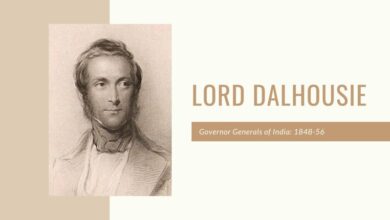Why Do Some Indian Parents Choose To Enroll Their Kids In Advanced Institutions

I picked a well-known, established school in Bengaluru when my kid was a young toddler. Even in kindergarten, it was all about academics, just like in other schools. The kids hardly ever played outside, had a tonne of homework to complete, and very little free time. The first-grade texts were uninteresting and utterly out of date. My daughter, who was once engaged in the world, withdrew inside herself and lost interest.
Her journey completely transformed when my husband and I transferred her to a modern school in Bengaluru. Each term had a theme at her school, and learning was project-based. The school seamlessly incorporated these themes throughout the disciplines, covering everything from textiles and rainforests to the Olympics and space. Watching my daughter discover new things and travel the world was beautiful.
Progressive schools, as opposed to traditional ones, encourage students to study in a variety of methods, work together, and acquire future-ready abilities. They continue to use national or worldwide curricula as general guides. Campus K in Chennai, Shibumi in Bengaluru, Abhaya School in Hyderabad, Yellow Train School in Coimbatore, and Sahyadri School in Pune are a few instances of India’s progressive schools. Today, there are numerous progressive schools in practically every Indian city.
In India, the educational system, according to Ryan Chadha, co-founder and director of the innovative school Shishya Jigyasa Academy in Bengaluru, is a treadmill of grades, entrance examinations, and college. According to him, “a significant portion of parents view education as an insurance policy and want to play it safe. Up until now, the world has honored a particular caliber of intellectual excellence and talent. The world now rewards a wide range of skills and abilities, so relying solely on academic excellence is a highly risky position to be in. Academic talent alone is not nearly as significant as initiative, entrepreneurship, and the capacity for problem-solving. Our middle school students just completed a project in which they constructed a robot out of commonplace items. They gained knowledge in engineering, product design, and the usage of soldering irons and glue guns. No lecture or textbook can compare to this.”
According to Chadha, his school’s fifth and sixth graders just took the Cambridge Checkpoint tests. They approached exams in a healthy, competitive manner, he claims. “We also introduced social checkpoints,’ where kids solved checkpoint tests in couples or groups.”
Bengaluru-based During a parent-teacher conference, Santhi Prasada, the parent of a 16-year-old daughter, discovered that the class instructor did not even remember her daughter’s name. This made her question the value of a traditional school. Although their daughter preferred the arts, Prasada and her husband, who were top achievers in school, encouraged her to choose to engineer. According to Prasada, “my daughter sketched an image of a man one day in the eleventh grade. Because I work in medicine and am familiar with anatomical proportions, I provided her advice on how to make her drawing better. She worked on her drawing all night, taking them seriously.”
Prasada was impressed by her daughter’s tenacity and decided to enroll her in Aurinko, a modern Bengaluru school that also offered a summer design program. She says that as part of the curriculum, the teachers had the kids create a portfolio outlining their future aspirations. “My daughter thought of herself as an illustrator. She was certain of her future income, place of residence, daily job schedule, and even the number of pets she would own.”
Many parents are concerned about how well their kids will “transition” to traditional schools after attending a progressive high school, but today’s higher education is more about experiences and connections than it is about degrees. Purujit Banwasi, 19, who attended a progressive school in Bengaluru since first grade, claims that adjusting to college was not at all difficult. My education provided me with the strategy that I now use: putting learning ahead of grades. Banwasi, who serves as co-president of his university’s theatre organization, attributes the development of his wide range of interests to his progressive education.
She developed a passion for subjects as diverse as geography and art thanks to my daughter’s progressive school. According to Chadha, “In India, we still think in terms of commerce, science, engineering, or the arts. Why can’t we allow a kid to study economics, physics, and music in high school? James Dyson, a prolific inventor, mostly studied art in high school and college while self-teaching himself enough engineering to keep creating new things. At a young age, we limit the world for our kids, although the real world is teeming with opportunity.”
News Mania Desk






